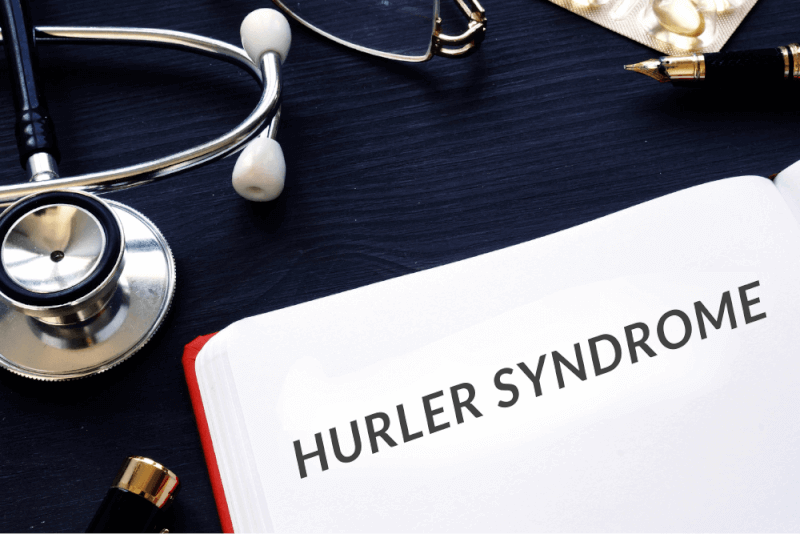Marfan syndrome is a genetic disorder that affects the connective tissues, the fibers that anchor our body structures and organs. The eyes, heart, skeleton and blood vessels are usually affected.
People with Marfan syndrome have common characteristics. These features include long and slender limbs and unusually long fingers and toes. The damage to the body caused by Marfan syndrome can be severe or mild. If the disease affects the aorta, it can be life-threatening.
Symptoms of Marfan Syndrome
Symptoms of Marfan syndrome vary according to the individual patient. Symptoms may even differ between family members. This is because Marfan syndrome affects different parts of the body. While some people experience mild symptoms, in other patients they can be life-threatening.
Common symptoms of Marfan syndrome are as follows:
- Flatfoot,
- Abnormally curved spine,
- Extreme myopia,
- Heart murmurs
- The chest protruding outwards,
- Sternum curved inwards,
- Disproportionately long arms, legs and fingers,
- Long and thin structure,
Causes of Marfan Syndrome
Marfan syndrome is caused by a gene disorder. This gene is responsible for the production of a protein that helps the connective tissues in the body to gain strength and elasticity.
Marfan syndrome is a genetically inherited disease. The child of a person with Marfan syndrome has a 50% chance of having the same disease. On the other hand, 25% of patients do not inherit the gene mutation from their parents. In these patients, the gene mutation occurs spontaneously.
Risk Factors of Marfan Syndrome
Marfan syndrome is equally common in men and women. The biggest risk factor for this disease, which can affect people of all ages and races, is that their parents have a gene mutation.
Complications Caused by Marfan Syndrome
Marfan syndrome can affect any part of the body. Therefore, it causes many different complications.
Cardiovascular Complications
The most risky complications caused by Marfan syndrome are cardiovascular complications. Defective connective tissues can cause the aorta to weaken.
Aortic Aneurysm
Because of Marfan syndrome, blood from the heart can leak out through the aortic wall. This leak usually occurs at the junction of the aorta and the heart.
Aortic Dissection
The walls of the aortic vessels are made up of layers. Aortic dissection occurs when blood leaks through a small tear in the innermost layer of the aortic wall, compressing the inner and outer layers of the aorta. This causes patients to experience severe pain in their chest or back. On the other hand, a dissection can weaken the aortic artery and cause it to rupture. A rupture of the aorta can be fatal.
Valve Malformations
Another complication seen in patients with Marfan syndrome is weak tissues in the heart valves. This can cause stretching of the heart valves and abnormal valve function. If the heart valves do not work properly, the heart has to work harder. The result can be heart failure.
Eye Complications
The eye complications of Marfan syndrome are as follows..
Lens Dislocation
Weakening of the connective tissues of the focusing lenses in the eyes can cause the lenses to dislocate. While the medical name for this problem is ectopia lens, it occurs in more than half of patients with Marfan syndrome.
Retinal Problems
In patients with Marfan syndrome, it can also cause tears and detachments in the retina, the light-sensitive area on the back wall of the eye.
Early Onset Glaucoma and Cataract
It is a complication seen in young patients with Marfan syndrome. Glaucoma can cause increased pressure inside the eye, which can damage the optic nerves.
Skeletal Complications
Marfan syndrome can interfere with the normal development of the rib. This causes the breastbone to be embedded or protruding into the chest. It is also one of the factors that increase the risk of abnormal curvature of the spine, such as scoliosis. Patients with Marfan syndrome often suffer from back and foot pain.
Pregnancy Complications
When patients with Marfan syndrome become pregnant, the heart starts to work harder. This can lead to a fatal dissection or rupture.
How is Marfan Syndrome diagnosed?
Many parameters are taken into account to diagnose Marfan syndrome. These include clinical examination, family history and some laboratory tests. One test is not enough to diagnose Marfan syndrome. For this, experts use a set of guidelines called the Ghent criteria.
The Ghent criteria include the width of the aortic artery, the position of the lens of the eye, physical symptoms and genetic testing.
If Marfan is diagnosed, children, parents and siblings should be screened for the disorder, even if they do not have symptoms.
Tests and Procedures Used to Diagnose Marfan Syndrome
The following tests and procedures are used to help diagnose Marfan syndrome.
CT Scan
It is used to control heart valves, the connective tissue around the spinal cord and the aorta.
MRI
It is used to create detailed pictures of the organs in the chest. This technique visualizes the lungs, heart and blood vessels.
EKO
ECHO is used to visualize the size of the aorta and to check the heart valves.
Genetic Tests
Gene tests performed by examining blood samples check the FBN1 gene that causes marfan syndrome. Many different mutations in the FBN1 gene can cause marfan syndrome. Genetic tests alone are not enough to diagnose the disease. The diagnosis needs to be supported by other symptoms.
Treatment of Marfan Syndrome
Although there is no cure for Marfan syndrome, early diagnosis can relieve symptoms and delay complications. The treatment of Marfan syndrome varies according to the parts of the body affected. This requires a combination of many disciplines.
Health Team
Marfan syndrome can cause problems in many areas of the patient, so it is necessary to work together with many specialists in order to realize the treatment. These experts;
- Cardiologist
- Ophthalmologist
- Orthopedist
- Genetic counselor,
- He is a cardiothoracic surgeon.
Medicines
Blood pressure medications are used to relieve pressure or swelling in the aorta. These medicines also help the heart to beat more slowly and more gently.
The most commonly used blood pressure lowering drug groups are beta blockers or angiotensin receptor blockers. This group of medicines may cause nausea, fatigue or dizziness in patients. If these side effects occur, calcium channel blockers or angiotensin-converting enzyme inhibitors can be used instead.
Surgery
If the aortic vessel is normally large, it must be replaced to prevent it from rupturing. In addition, if there is an aortic tear or dissection, patients undergo emergency surgery.
If there is a problem with the aortic valve, it is replaced with mechanical or animal-derived valves. In addition, surgeries are performed to repair the mitral valve in cases of mitral regurgitation.
If there is a deformity in the rib cage, surgery can also be performed to correct the sternum so that it does not put pressure on the heart and lungs.
Marfan syndrome patients can undergo surgery to repair the collapsed lung caused by pneumothorax.
Orthopedic surgeries are also used for severe scoliosis. In addition, eye surgeries are performed to eliminate eye complications.
Medical Devices
Corsets and medical devices are used to repair non-severe scoliosis.







